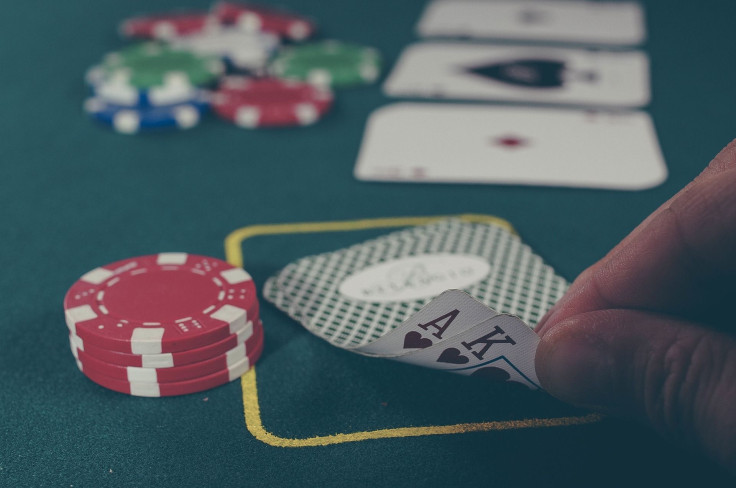Risky Business: Researchers Identify Reward System Signal Responsible For Risk-Taking Behavior

Everyone has that friend — or maybe you are that friend — who always seems to be taking crazy risks. Maybe they gamble in hopes of winning it all, or maybe they decided to quit their stable, boring job to travel the world and make it big as a travel blogger. Either way, it seems like some people are hardwired to take more risks than others, and scientists at Stanford University may be one step closer to understanding exactly how that is.
Risky Business
Humans and animals alike vary among themselves when it comes to risk-taking behavior. Some humans, for example, are more likely to be risk-averse — the polar opposite of that gambling friend. But having a propensity for one isn’t necessarily better than the other; balance is key.
“Risky behavior has its moments where it’s valuable,” said Dr. Karl Deisseroth, professor of bioengineering and psychiatry and behavioral sciences at Stanford, in a press release. “As a species, we wouldn’t have come as far as we have without it.”
Deisseroth warned, however, that taking too many chances can be damaging as well.
“I’ve seen patients whose aberrantly high risk-seeking activity resulted in accidents, addictions, and social, financial, or occupational failures that exposed them to a lot of harm and blame,” he said.
Most people, according to Deisseroth, are pretty risk-averse. After all, a dollar today is worth more than a dollar tomorrow, and most organisms can’t afford to take huge risks, even if they’ll have a higher return over time. Still, a small minority of the population chooses to take these risks anyway. The Stanford team wanted to determine which brain processes were responsible for this behavior, so they expanded on previous research on human brains, and looked inside the brains of rats.
“Humans and rats have similar brain structure involved,” Deisseroth said, adding that the brain circuitry known collectively as the reward system is shared by all living creatures ranging from insects to humans.
The Path To Reward
One of the reward circuit’s most important features is a nerve tract linking deep-brain tissue, called the ventral tegmental area, with a forebrain structure known as the nucleus accumbens. The nerve cells in this tract are responsible for secreting the neurotransmitter dopamine, which binds to initial receptor cells in the nucleus accumbens. These cells, in turn, alert dopamine receptors that fall into two categories, DR1 and DR2.
Previous research by Dr. Brian Knutson, study co-author and associate professor of psychology, indicated that when people consider taking risks, activity in the nucleus accumbens increases. Knowing this, the team was able to focus its efforts on activity in the DR2 nerve cells, where they saw the most activity.
To monitor electrochemical signals in the nucleus accumbens, the researchers used a hair-thin optical fiber in a technique known as fiber photometry. They then stimulated the cells with light, a process called optogenetics, allowing them to duplicate naturally occurring signals’ timing and strength. The techniques were both pioneered in Deisseroth’s lab.
Armed with this process, the researchers outfitted a group of rats with an optical fiber that allowed them to move freely, and began their research.
A Sweet Deal
The team placed the rats in an environment with two levers: one dependably yielded a moderate dose of sugar water, while the other released a smaller dose most of the time, but a very sizeable one every so often. Pulling either lever would yield the same payoff over time. After a little training, about two-thirds of the rats showed risk-aversion, consistently choosing the steady, moderate payout option. The other third took risks. And while the rats usually stuck with their original preference, occasionally they would venture out and try the other lever.
Risk-averse rats who tried the riskier lever, and received a smaller dose, immediately returned to the dependable lever. The risk-taking rats, however, were unfazed by smaller payouts, and like some human gamblers, were not put off by a losing streak.
The experiment got interesting once the researchers began using optogenetics to alter the rats’ brains. They saw that before a rat pulled either lever, D2 cell activity increased significantly in risk-averse rats, but not risk-seeking rats. By mimicking this signal in risk-seeking rats, the researchers effectively transformed them into risk-averse organisms. Once the researcher-induced laser impulses were halted, though, the rats returned to their gambling behavior.
In contrast to this, delivering a DR2-stimulating drug called pramipexole, which promotes risk-taking behavior in people, temporarily converted risk-averse rats into risk takers.
“It looks as though we have found a brain signal that, in most individuals, corresponds to a memory of a failed risky choice,” Deisseroth said. “It seems to represent the memory of that recent unfavorable outcome, manifested later at just the right time when it can, and does, modify an upcoming decision.”
The signal was strongest in normally risk-averse rats who had tried the risky lever only to be given a small dose in their previous attempt, and weakest in risk-seeking rats — unless forced into existence through optogenetics.
Lead author Kelly Zalocusky said the signal could perhaps predict how different drugs can influence risk-taking in humans, and act as a guide for understanding how individuals vary in risk-seeking. Their experiment’s results may also help us understand some psychiatric conditions and develop better medications for treatment.
Source: Zalocusky K, Ramakrishnan C, Lerner T, Davidson T, Knutson B, Deisseroth K. Nucleus accumbens D2R neurons signal past unfavorable outcomes during decision-making and control risky choice. Nature. 2016.



























